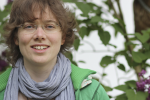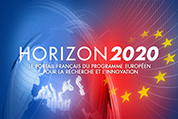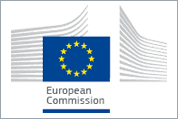ESR1.3: Eva DokterRelating deterministic and statistical properties of multiply-scattered codas

Eva Dokter: I decided to become a geophysicist during a student exchange to Canada. After school I went to Kiel University to study geophysics. My diploma thesis is about applying full waveform inversion to a near surface SH wave data set from Slovakia. I did a synthetic study to develop an optimum workflow for detecting a mud or air filled cavity, which was what was expected to be in the survey area. When I inverted the field data it turned out that there is no such cavity to be found, though. Instead, there is a complex medium, which is now nicely imaged with respect to shear wave velocity and density, underneath a fairly homogeneous top layer. In November 2015 I was accepted into the WAVES programme and now I am a PhD student at Edinburgh University's School of GeoSciences.
Main host institution
School of GeoSciences, University of Edimburgh, United Kingdom
Supervisor
Andrew Curtis (Andrew.Curtis @ ed.ac.uk), James Rickett, (JRickett @ slb.com)Kees Wapenaar (C.P.A.Wapenaar @ tudelft.nl)
Secondment institution
Schlumberger Gould Research (Cambridge, UK)
CNRS Isterre (Grenoble, France)
Objectives
Recently the Edinburgh group has shown that multiply-diffracted energy recorded in codas of Green’s functions can be analysed and decomposed into singly-diffracted subcomponents, that the number of diffractors can be estimated, and that each can be labelled or finger-printed. Each observed packet of energy in the coda can then be associated with a scattering path between specific, labelled diffractors, and all of this can be achieved without any explicit model of the medium of propagation, and with no estimate of the diffractor locations12. A key result that also arose from this work is that all information about complex diffracted codas is in principle contained in only the primary and secondary scattered waves. A related result has also been found for reflected wavefields, providing novel methods to analyse and identify multiply-reflected waves, and extending the analysis to a significant proportion of all scattered waves. The ESR will investigate the relationship between the (often observable) primaries and secondaries, and the deterministic and (also observable) statistical properties of resulting codas. They will also extend the results from idealised (isotropic) diffractors to more realistic diffractor types and from (currently) kinematic to a dynamic relations. They will test the kinematic limitations of current methods using blind-test real data from physical laboratories within the WAVES network. This will allow real, complex, multiply-scattered codas to be analysed using completely different methods to those currently in use for, e.g., volcano, earthquake or landslide monitoring: explicitly linking stochastic and deterministic observations of scattering wavefields enhances our ability to extract information about the medium, and to monitor changes in the medium over time. Finally, this will be applied to real field data.
Expected results
- New kinematic and dynamic relationships between deterministic and stochastic observables in both Green’s functions and band-limited real source-to-receiver recordings;
- limitations and potential of such methods will be defined and verified using blind-tests on real data from other laboratories within WAVES;
- explicit testing on real data to demonstrate enhanced ability to monitor medium changes (the Earth, solid materials in non-destructive testing applications, or potentially the human body).
further information
Eva Dokter's ResearchGate page
International conferences
- EAGE - 79th European Association of Geoscientists & Engineers Conference & Exhibition 2017, 12-15/06/2017 abstract and presentation on Velocity Analysis Using Surface-Seismic Primaries-Only Data Obtained Without Removing Multiples
Also in the section
Key Facts
- Coordinated by Université Pierre et Marie Curie
- 15 participating partners
- 6 European countries and the USA
- 15 trained fellows
- Project budget: 3 227 952.96€
- Project duration: 4 years
- WAVES is a European project funded by the European Union’s Horizon 2020 research and innovation programme under the Marie Slodowska-Curie grant agreement n° 641943.
Contact
Coordinator:
Lapo Boschi (lapo.boschi @ upmc.fr)
Project Manager
Fanny Schultz (fanny.schultz @ sorbonne-universite.fr)



